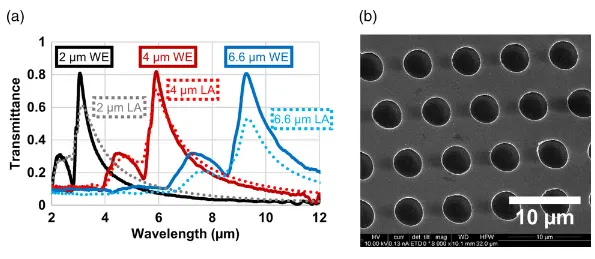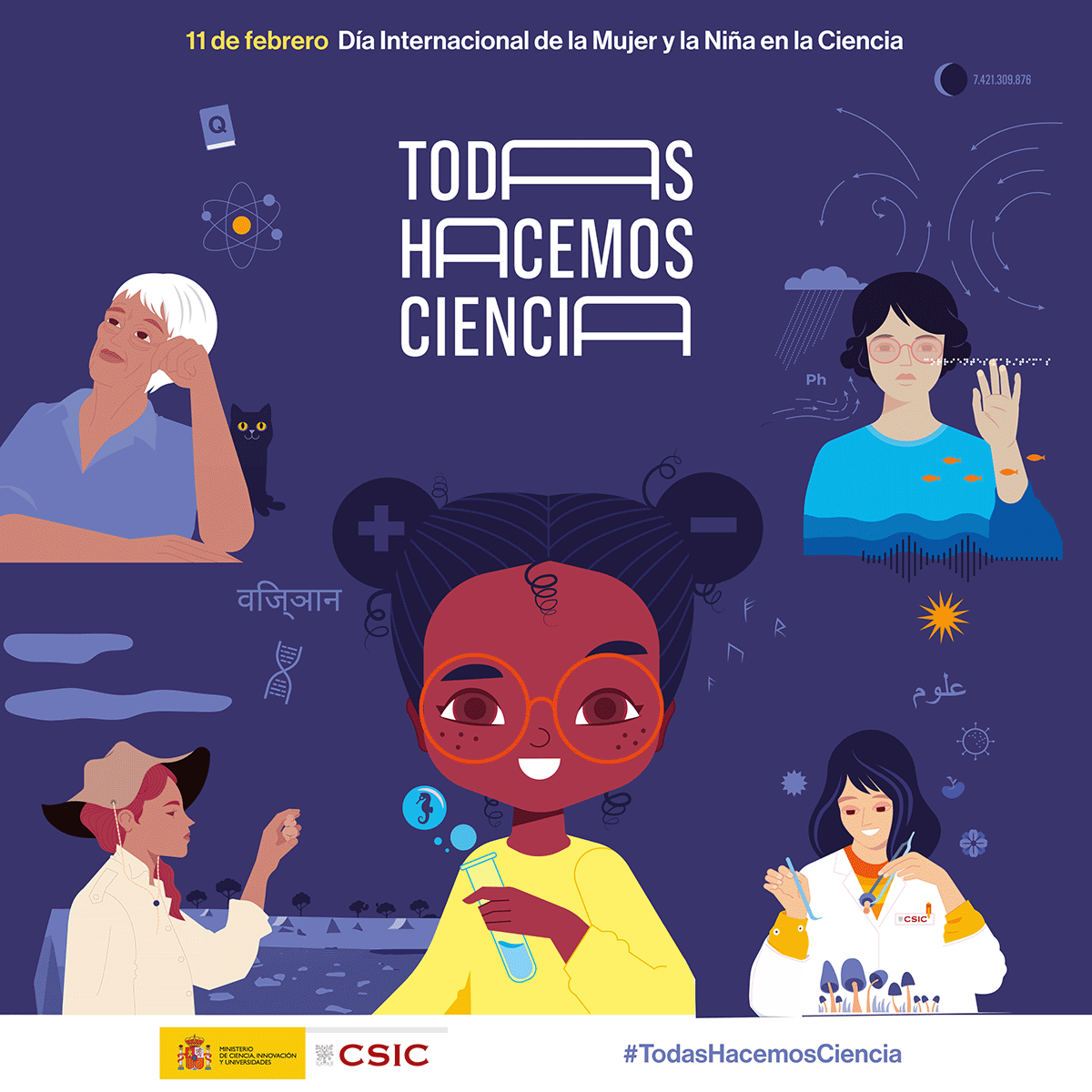Filtering and Modulation from the Infrared to the Terahertz using Phase-Change Extraordinary Optical Transmission Metasurfaces
-
Scientists have created a new A type of infrared filter that can let light through, but only in a certain bandwidth. By combining these structures with phase change chalcogenides (whose refractive index changes abruptly through crystallization and remorphization by optical or electrical pulses), these filters become reconfigurable, allowing one spectral band or another to pass depending on the structural phase of the chalcogenide. employee.
-
This new filter could be used for example in cameras for ultra-fast multispectral imaging, or for sensing techniques at different spectral bands.
Latest news
What is extraordinary optical transmission?
Ordinary light transmission through an opaque metal film is greatly improved when a series of periodic holes smaller than the wavelength of the incident light are added to the film. This is known as the extraordinary effect of optical transmission (EOT), which occurs mainly due to the presence of surface plasmons formed by the free electrons of the metal. This EOT transmission occurs at a particular wavelength and bandwidth and is dependent on the geometry of the array and the optical properties of the materials surrounding the array.
The device, made by electron beam lithography and thin film deposition, consists of an opaque metal film that has been drilled with periodic holes arranged in a square grid, the sizes of which are less than the wavelength. This generates the effect of extraordinary optical transmission, which increases the transmitted radiation at a specific frequency with respect to a single hole. To this structure, a layer of two different types of phase change chalcogenides (Ge2Sb2Te2 and Ge3Sb2Te6) was added, which have the property of modifying the spectral position of the transmission band, changing the phase of the material between amorphous and crystalline, and therefore its refractive index (Figure 1).

Figure 1 (a) Light microscopy image of one of the devices manufactured by electron lithography. (b) Complex refractive index of the phase change chalcogenide Ge3Sb2Te6 in its amorphous (am-red) and crystalline (cr-blue) phases. (c) Normalized transmittance measurements, where an extraordinary transmission band change can be seen between the amorphous and crystalline phases of Ge3Sb2Te6 .
This new reconfigurable filter can be useful for the field of multispectral detection, agricultural and environmental applications, or chemical detection.
In addition, with the aim of verifying the scalability of the devices towards industrial environments, two different manufacturing methods were used: (i) electron beam lithography, a high-precision technique, but which consists of several manufacturing steps and high cost; and (ii) ultra-fast direct laser writing, which offers slightly lower accuracy, but with the added advantage of of being a process low cost and achievable in a single step (therefore implementable in most industrial environments). The optical response (transmittance) of several equivalent devices manufactured with the two approaches was compared (Figure 2), evidencing that the laser method is close to being able to compete with high-cost manufacturing methods based on multi-step lithographic methods.
Currently, and continuing in this line, the laser processing group is optimizing the manufacturing process, in order to improve the optical response of devices made by laser up to the limits imposed by high-precision lithography.< /p>

Related news
The Institute of Optics joins the celebration of 11F
Full and equal access and participation of women and girls in science and technology Madrid / January 31, 2025In recent decades, the international...
Optoplasmonic tuneable response by femtosecond laser irradiation of glass with deep-implanted gold nanoparticles
Ion implantation of Au2+ at MeV energies has enabled the creation of nanoparticles embedded at greater depth, resulting in a Fabry-Perot cavity...
On November 20th, David Grojo from CNRS will give a lecture entitled “New Dimensions Open to Ultrafast Laser Material Modifications”
Madrid / November 13, 2024On Wednesday, November 20th at 11:30 a.m. we will have a seminar organized by the Laser Processing Group in the conference...




